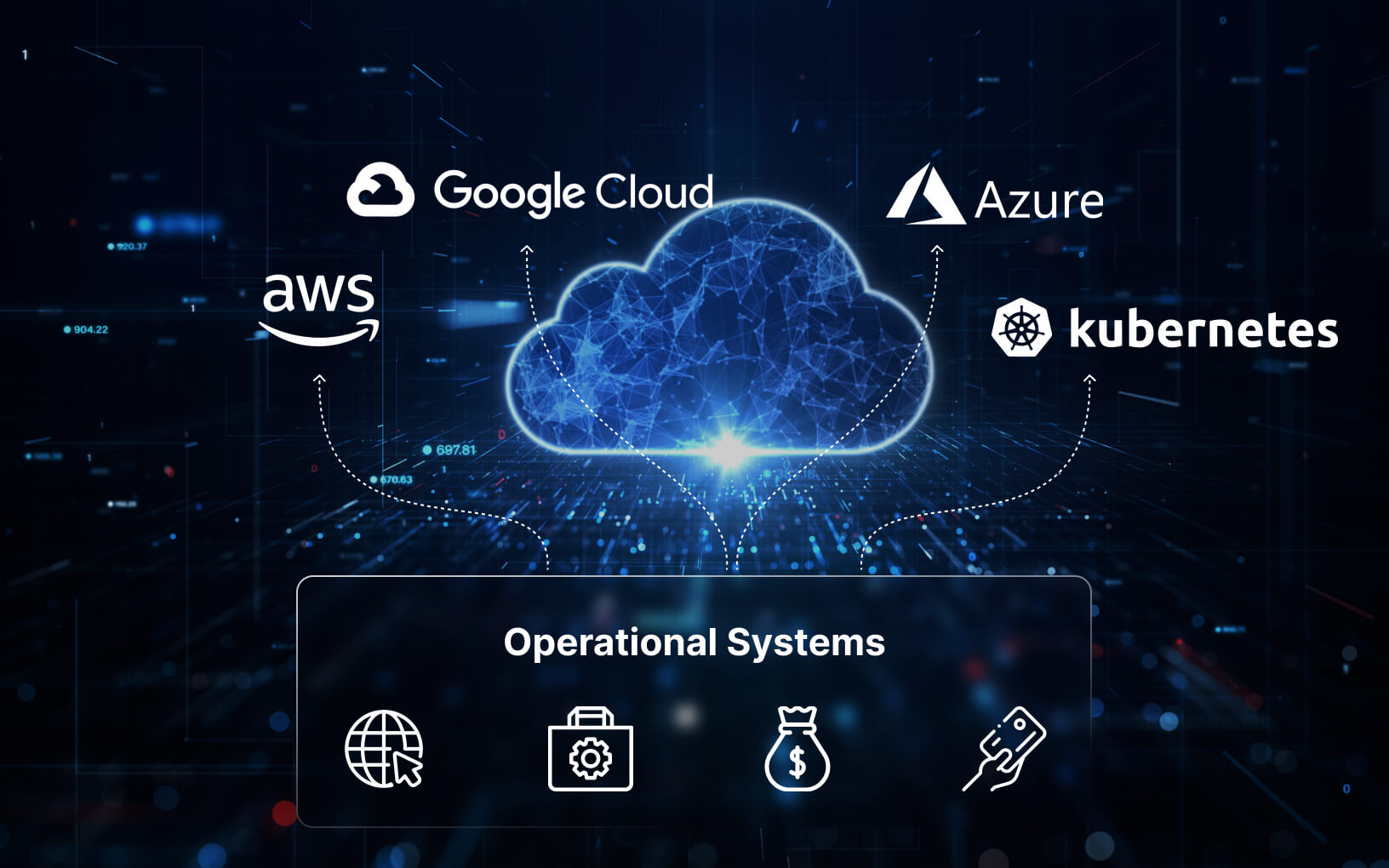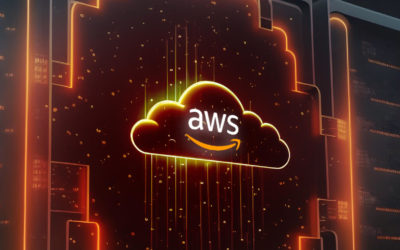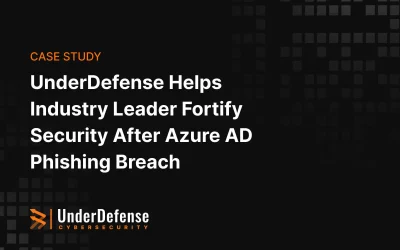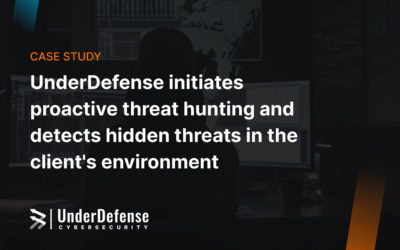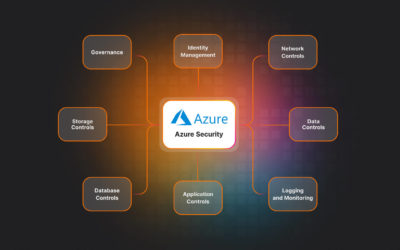Table of Contents
The state of cloud security
The perceived lack of control and visibility in the public cloud, coupled with a shortage of resources and expertise, has led to the belief that the possibility of a security incident in the public cloud is higher than in traditional on-premise environments. Understandably, 95% of organizations worry about their security posture in public cloud environments, as mentioned in the Fortinet 2023 Cloud Security Report.
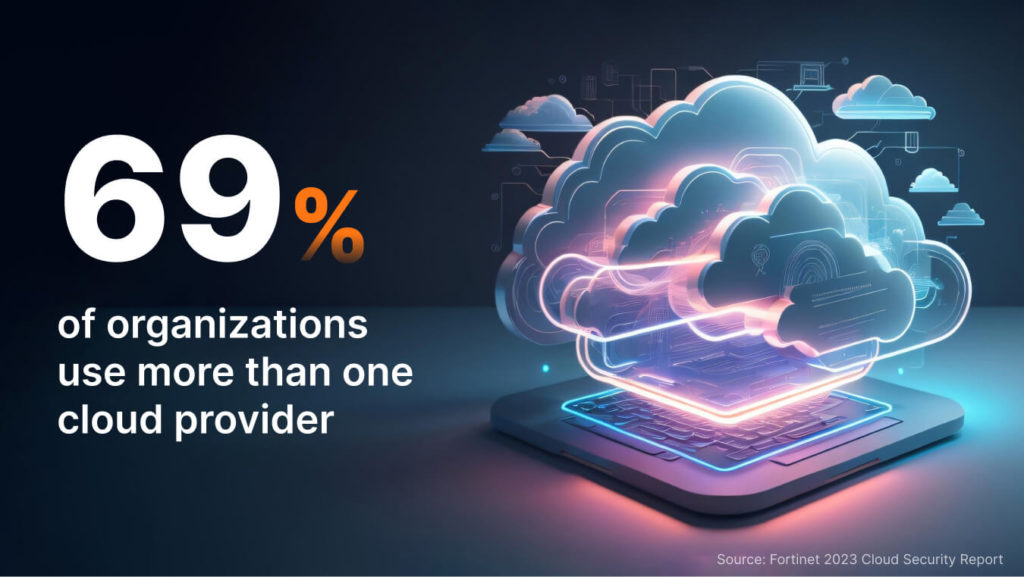
It becomes obvious that the need to streamline and fortify cloud operations is soaring. This article will explore the primary challenges and suggest actionable steps your organization should take to enhance its multi-cloud security.
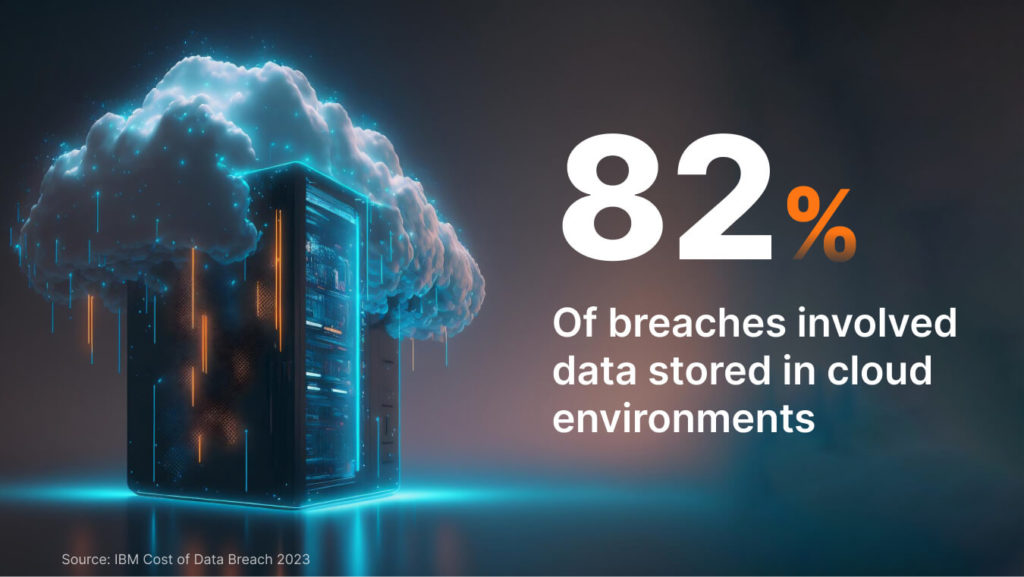
Top 6 multi-cloud security challenges and how to solve them
The increasing adoption of multi-cloud environments has posed a significant challenge for security operations centers (SOC) in monitoring and analyzing security data effectively. The large volumes of data generated across various clouds exceed the capacity of traditional SIEM systems, making it difficult to gain a comprehensive view of security events and identify potential threats.
Solutions
- Implement a cloud-native SIEM: Utilize solutions like Sumo Logic, Splunk, or QRadar, designed to aggregate and analyze data from multiple cloud providers. By doing so, you will gain a holistic view of security events across the entire cloud infrastructure, facilitating threat detection and analysis.
For a hassle-free approach, consider exploring managed SIEM services to optimize and enhance your security operations
- Normalize and filter data: Remove redundancy and irrelevant information. Such an approach reduces the data volume and ensures that only the most relevant and actionable data is fed into the SIEM, improving efficiency and performance.
- Leverage default threat intelligence: Benefit from threat intelligence and management capabilities offered by cloud providers. In this case, you can identify actual security events that need additional investigation in the SIEM system, allowing analysts to concentrate on addressing the most critical threats.
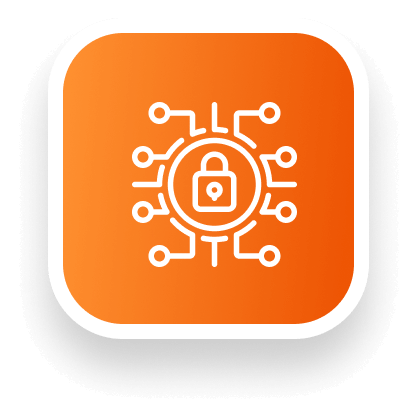
2. Network security
Unrestricted data transfer between cloud providers and on-premise environments can lead to unnecessary costs. This is because sending all logs for central analysis or storage can result in excessive data transfer charges, especially when dealing with reams of data. Additionally, unfiltered data transmission increases the risk of security incidents and sensitive information exposure.
Solutions
- Data aggregation: Collect logs within each cloud provider and only send out specific data that require further analysis or storage. It will minimize costs and lower the risk of data exposure.
- Direct connections: Establish direct tunnels or connections between cloud providers and on-prem environments to avoid egress fees. You will also strengthen security by isolating data transfers from the public internet.
- Traffic segmentation: Divide the network into smaller, isolated segments to control data flows and prevent unauthorized access.
- Cloud provider security tools: Use cloud-native security tools to analyze and prioritize data transfer, optimizing resource utilization and minimizing unnecessary data transmission.
Need 24/7 business protection and have no clue where to start
We have the answers
Consider exploring Managed Detection and Response services for a comprehensive and proactive approach to network security.

3. Lack of cloud security talent
The increasing demand for skilled cloud security professionals in multi-cloud environments poses a significant challenge for organizations. Finding and retaining experts in multiple platforms is becoming increasingly difficult. The workforce shortage has reached almost 4 million, and now it hinders organizations’ ability to effectively manage and secure their multi-cloud infrastructure.
Solutions
- Specialize and divide: Focus on developing specific expertise in each platform rather than training all team members on several technologies at once.
- Build unicorns: Invest in training and development programs to transform existing talent into multi-cloud experts. This approach provides opportunities for continuous learning, mentorship, and hands-on experience across different cloud platforms.
- Succession planning: Implement a succession planning strategy to ensure the continuity of knowledge and expertise. It includes identifying potential successors for key roles and providing them with opportunities for growth and development.
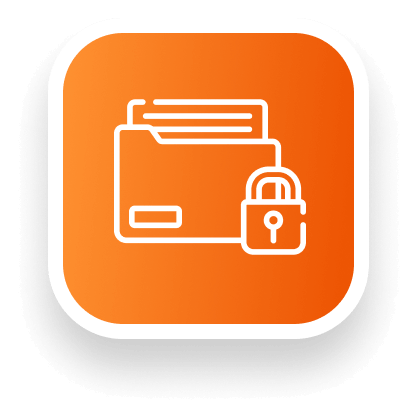
4. Data protection
Juggling data protection and privacy obligations in a multi-cloud environment is challenging. The shared responsibility model demands a precise division of tasks between the organization and cloud providers, ensuring data protection and privacy controls are effectively implemented.
Solutions
- Establish a centralized data governance framework: Implement a strategy to oversee data management practices across all cloud providers. It should define information ownership, access control, data classification, and retention policies, ensuring consistent data governance across the multi-cloud environment.
- Utilize cloud-agnostic data security tools: Leverage tools that provide centralized visibility and control over information across several platforms. They can help identify and classify sensitive data, enforce access controls, and monitor data movement across cloud environments.
- Implement Data Loss Prevention (DLP) solutions: Such tools prevent unauthorized data exfiltration from the multi-cloud environment. They protect sensitive data from being transferred to unauthorized locations or insecure channels.
- Encrypt data: Encrypt data both at rest and in transit to protect it from unauthorized access and disclosure. Encryption should be applied across all cloud providers and data storage locations.
- Establish clear data ownership and access policies: They should be enforced consistently across all cloud providers and data access methods. Ensure that only authorized individuals can access sensitive information.
- Risk assessments and audits: Conduct regular evaluations and reviews to identify and address potential data security and privacy vulnerabilities in the multi-cloud environment.
For deeper insights into securing specific datasets within G Suite, consider these Google Workspace security best practices related to data protection and user access control.
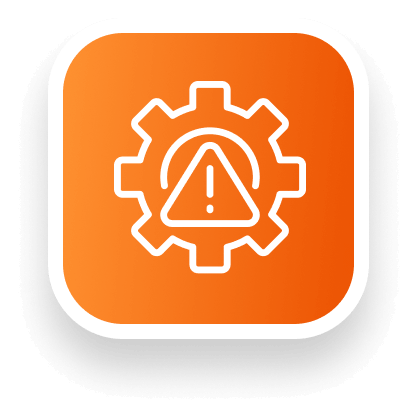
5. Misconfiguration
The multi-cloud infrastructure can get increasingly complex and heterogeneous. Organizations face the daunting task of managing diverse configurations, which can easily lead to errors and vulnerabilities. Misconfigured cloud resources can inadvertently expose sensitive information, grant unauthorized access, or disrupt critical services.
Solutions
- Leverage a Cloud Security Posture Management (CSPM) solution: CSPM tools provide centralized visibility and control over cloud settings, enabling organizations to identify and remediate misconfigurations across multiple cloud providers. These solutions can continuously monitor configurations, assess compliance with security policies, and provide automated remediation recommendations.
- Standardize and automate configurations: Implement standardized configuration templates and automation tools to ensure consistent and secure settings across all cloud environments. Automation can streamline configuration processes, reduce errors, and promote compliance with security policies.
- Establish and enforce configuration policies: The policies must align with organizational security objectives. They should clearly define acceptable configurations, identify prohibited settings, and outline remediation procedures for non-compliant ones.
- Educate and train cloud engineers: Provide comprehensive training on proper configuration practices and the potential consequences of misconfigurations. Such sessions should cover cloud-specific configuration guidelines, security best practices, and management tools.
By implementing these solutions, you can significantly reduce the risk of misconfigurations. But for an extra layer of security, consider comprehensive penetration testing services to identify and address even the most subtle misconfigurations.

6. Compliance and cloud security posture management
Managing and enforcing consistent security policies and configurations across diverse cloud platforms poses a significant challenge. The lack of standardization and the heterogeneity of cloud infrastructure lead to inconsistencies in security practices and increased vulnerability to threats.
Solutions
- Define cloud-agnostic policies and standards: Establish overarching security policies and standards that are not bound to a specific cloud provider. Rather than prescribing specific implementation details, they should focus on the desired outcomes, such as MFA, microsegmentation, encryption, and traffic routing.
Our cybersecurity compliance services team can help you develop and implement cloud-agnostic policies and standards aligned with your specific industry and regulatory requirements.
- Leverage cloud provider automation tools: Utilize the native automation tools each cloud provider offers to automate as much of the configuration process as possible. This approach ensures consistency within each cloud environment while leveraging the specific capabilities of each platform.
- Adopt Infrastructure as Code (IaC) tools: Implement IaC tools like Terraform to codify cloud infrastructure configurations. IaC enables consistent and repeatable infrastructure deployment across different cloud providers, reducing manual errors and improving efficiency.
- Enable cross-platform visibility and control: Utilize tools that provide visibility and control across various cloud providers. They can help identify and remediate configuration inconsistencies, enforce policies, and maintain a holistic view of the multi-cloud environment.
Being prudent makes all the difference
Simplify multi-cloud management with UnderDefense MAXI
Multi-cloud deployments offer flexibility but present intricate challenges in configuration management, access control, visibility, and connectivity. These complexities can increase operational costs and security risks. To advance multi-cloud enablement, you should aim for a unified view across your cloud environments.
While providing practical tips that are relatively easy to implement today, we understand that managing these changes can be challenging, especially without the right expertise.
Solutions like the UnderDefense MAXI platform are designed to ease these challenges, providing a unified multi-cloud security approach and a path to more efficient and secure multi-cloud operations. We mitigate risks, prioritize best practices, and implement a comprehensive security strategy covering all cloud environments, allowing you to enjoy multi-cloud advantages while minimizing security threats.






